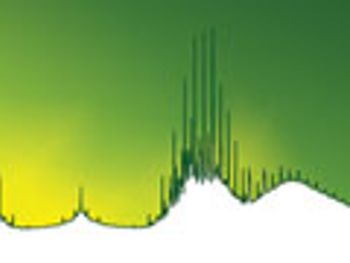
John Hinshaw investigates the influence that choosing hydrogen carrier has on column selection and operation with direct-interface GC?MS.

John Hinshaw investigates the influence that choosing hydrogen carrier has on column selection and operation with direct-interface GC?MS.

There are four types of poisonous frogs known to secrete lipid?soluble alkaloids derived from their food. The discovery of these skin alkaloids in a fifth species in Cuba could provide new clues to these amphibians? evolution.

A method based on SPME and GC–MS was developed to analyse chlorophenols and their metabolites in aqueous samples.

Incognito concludes with a discussion on attempts to improve the selectivity of GC separations.

Part 2 of the series looks at the effects of peak tailing on resolution and peak overlap.

The authors evaluate a method for detecting pesticide residues in dandelion root powder.

John Hinshaw concludes his series on the effects of peak tailing.

Industry veteran Thomas Beesley takes readers on a tour of his experiences in chromatography.

The development of a microfabricated comprehensive GC that can be used as a portable measurement device.

The concluding part of the series focuses on testing quantitative area measurment.

Incognito turns his attention in the second part of this series to looking at ways of decreasing analysis time in capillary GC.

Joining us for a discussion on gas chromatography this month are Eric Phillips of Thermo Fisher Scientific and Ngoc Nguyen of Phenomenex.

The increasing need for even more sensitive analyses of harmful substances brings new pressure on gas chromatography (GC) analytical methods.

Speaking to Konik-Tech about the development of a new system combining LC and GC technology.

Using narrow-bore column fast GC combined with rapid scanning qMS to analyse flavours and fragrances is described.

The authors explain the operational considerations for switching from helium to hydrogen in the separations lab, as well as discussing options.

GC expert Jaap de Zeeuw explores the historical development of PLOT columns, covers details of the most popular stationary phases, and provides practical hints.

Part 2 of the series looks at the effects of peak tailing on resolution and peak overlap.

In Part II of this series, John Hinshaw covers the effect on tailing peak measurements when the peaks start to merge, following on from Part I, which discussed nontailing peaks.

In this study, comprehensive 2D gas chromatography-mass spectrometry with electron impact and chemical ionization was used to characterize silylated fatty alcohol alkoxylates.

The second part of this series on green chromatography describes characteristics of GC and SFC

Exploring the use of GCxGC-FID as a technique for qualitative and quantitative analysis of perfumes

A look at the effect of two overlapping peaks on peak quantificiation and resolution

An overview of current chromatography-based food toxicant screening is presented.

Incognito concludes by looking at column contamination (and regeneration) and how to select the most appropriate inlet liners for specific applications.